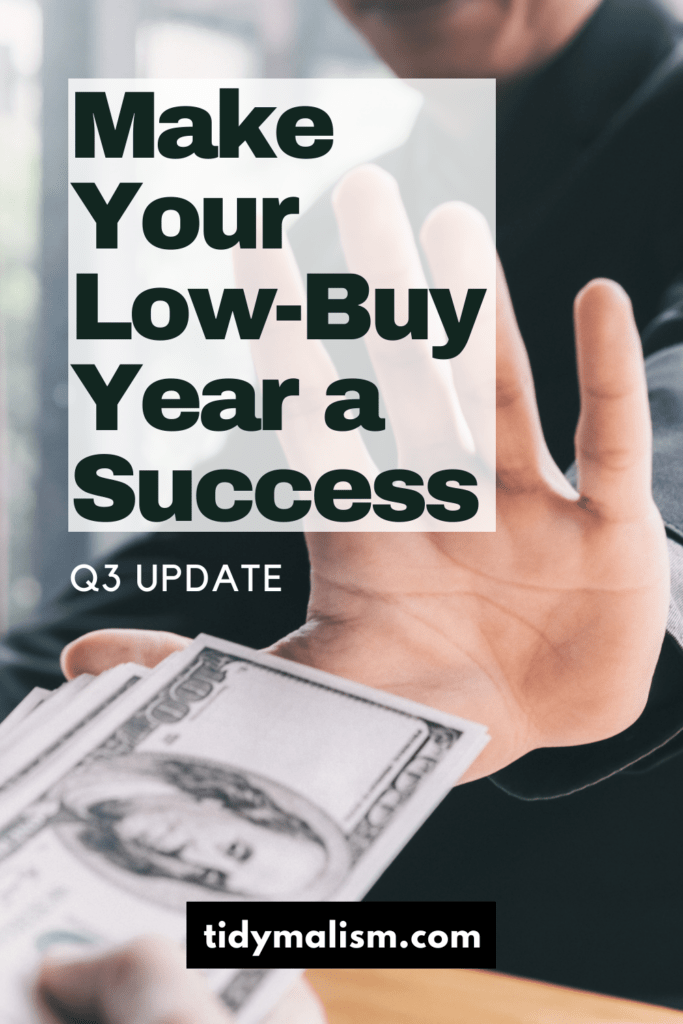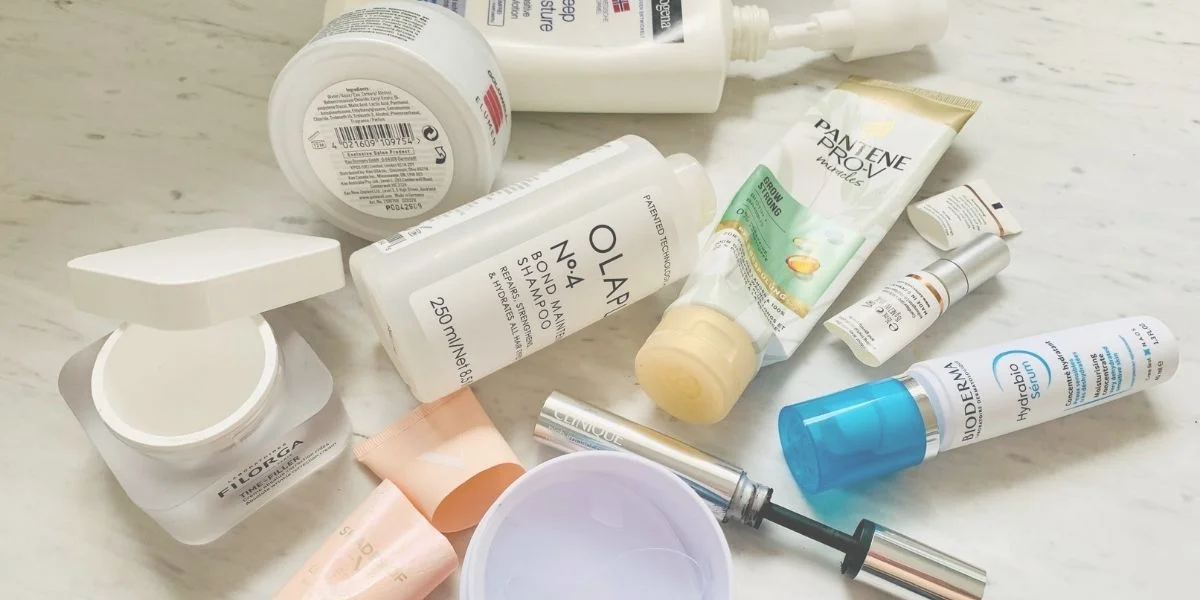It’s time for another another progress report! I’ve been doing a low-buy challenge since the start of the year and share an update here at the end of each quarter. If you’re a new reader (hello!) and want to read your way through this series in chronological order, or just dig into more detail about how I defined my own low buy rules and what incited me to go low-buy in the first place, then check out the Minimalist Money category. You’ll find everything you’re looking for there.
Sticking to low or no buy rules when you’re doing this sort of a smart spending challenge doesn’t have to be difficult. The trick is to do your homework first! By assessing your typical expenditures and identifying the spending categories in which you personally tend to drop a lot of money, you’ll be able to create rules that work precisely for you.
Nine months have quickly passed since I went into low-buy mode. How has it been going? What’ve been the biggest pitfalls? Where lied the biggest slip-ups? Here’s an honest review of Q3 2021.
What It Feels Like Adhering to Low Buy Rules for 9 Months
Folks often go gung-ho into no-buy or low-buy challenges as part of their New Year’s resolution pact. That was not my personal case. My Q1 review went into detail about the situation I found myself in at the time.
Essentially there had been a long tail of growing frustration with the amount of things I had at home. Then, I suddenly found myself unemployed after having had served my employer for over eleven years. The latter situation gave way to common sense, and so the two metrics fused. I finally had a good reason to knock it off with the shopping and superfluous expenditures. I had to rein in my spending.
Conducting a serious, quantitative assessment of my spending habits was the first step towards going low-buy. I was then able to define my personal low buy rules. Doing the preliminary groundwork was essential for success. Without really knowing where I was dropping the biggest bucks, I would not have been able to stick with my rules or even properly define them.
One of the biggest fears in doing a smart spending challenge of this type is that it will feel constraining. Perhaps even tortuous. Fears of shopping or coffee to-go withdrawal symptoms come to mind. Of missing out. As absurd as we know it all is, you can definitely suddenly feel very “uncool” when you no longer allow yourself to keep up with the Joneses and purchase the latest hot trainers, smartphone, or kitchen appliance. The pressure to be a good consumer is real.
Ultimately though, the real truth is: the more you own, the more your stuff owns you.
After nine whole months of low-buying I can reiterate today that it is easy. Provided you define rules that are custom-tailored to your personal situation! Once you’ve done so, you’re halfway there.
Yes, there were days on which I pined for a pair of the latest Stuart Weitzman boots which had just hit the shops. That afternoon in the summer when I walked past all the sales going on downtown and forced myself to keep going, all the way home, empty-handed. Or the time my friend mentioned he had ordered himself new headphones and a new pair of Golden Goose trainers.
Oh how I envied him for a few moments. I wanted to go shopping again, too!
Your feelings are valid. Let them sit with you a bit. Ask yourself how your life would be different if you had the new kicks or trousers or even that iced latte to-go with a muffin.
Within seconds you will usually realise: nothing would be different except for your bank account, your storage situation at home, or possibly your own muffin top 😅
You realise you can abstain with ease. You realise these things will still be there if you truly want them in your life again later on. For now, they can wait.
Low Buy Rules Re-Cap
Prior to the start of my low-buy year, I came up with four simple categories and subsequent spending rules that aligned with my most mischievous spending habits:
- Beauty products: I’ll only allow myself to purchase cosmetic and skincare refills I run out of and actually need again for my daily regimen.
- Fashion: No clothes, shoes or accessories shopping anymore with two exceptions: I may use the remaining vouchers I have before they expire, and I may purchase a certain bespoke item I ordered over a year ago if it finally arrives.
- Dining out: I may only get two takeaways or inexpensive meals out per month.
- Subscriptions: I am only allowed to keep the ones I use multiple times a week.
How Did I Do Sticking to My Low Buy Rules in Q3?
To sum up, August was a heck of a month in terms of overall expenditures. But, as mentioned in my Q2 update, I knew those expenses were coming up and had planned accordingly. Also, none of them were in any of my low-buy categories; they revolved around home and automotive upkeep.
The good:
I had joined the Fashion Detox movement at the start of Q3, which aligned with my own low buy rules. For the duration of 90 days, the community around #fashiondetox pledged to buy nothing new in terms of apparel. The idea was to use what we have, swap, borrow, and thrift. In my particular case, I simply abstained completely and focused on wearing what I have.
I purchased only one pair of black tights from Max Mara in Q3, and they were on sale. I qualify tights as an undergarment (because unless you’re genZ, they ARE) and so I feel I successfully adhered to my clothes shopping ban throughout the entire quarter.
True, the tights I chose were expensive, but they are high quality and will thus last a very long time. Plus they go with everything all autumn and winter long so I’ll get a lot of use out of them, which makes the cost-per-wear ratio much lower than a cheap pair of tights of low quality.
Another success I had this quarter was in the beauty department. Here, I was able to stick to my low buy rules very nicely again. Admittedly, it was easy for me thanks to a ridiculously well-stocked supply of products I had accumulated when the pandemic set in last year.
So I kept using what I had, and only bought replacements or refills for basic items that are an inherent part of my daily regimen. In Q3 I had to re-purchase an eye serum, body lotion, shaving foam, toothpaste and shower gel. Reasonable purchases all in all.

It was nice to finally get a grip on what little bathroom storage space I have, too. Because I continued to plow through my stock of supplies, my storage situation eased up tremendously. Now I can find what I’m looking for in my little Muji cart next to the sink, instead of having to dig everything out and re-arrange it all again. Yay, low-buy year!
There were no changes in any of my subscriptions. I had already cancelled everything that was superfluous back in Q1 and have not taken out any new ones.
The bad:
I had a bit of an ambiguous situation in my “dining out” category this past quarter. Subsequently, it was very hard for me to stick with my low buy rules here on many occasions. Here’s what happened:
As previously mentioned, things had started opening up again where I live following many long, lonely and dreadful months of repeated hard lockdowns. It was glorious to be outside again. To be anywhere again, other than one’s own couch.
I started going back on dates after I was fully vaccinated. This meant that I was spending more money because most men in my region typically expect the woman to pay for herself. (I’ve even experienced dates where the man says he “forgot his wallet at home” and I had to pick up the entire check, I kid you not. I should write a book about bad dates. But I digress.)
In summary, I was out and about much more frequently during the summer months, and thus spent more money on small meals, takeaways, and drinks than my rules had allowed for. Over the three-month Q3 period, I spent a total of €213. By comparison, I had only spent €95 in total over Q2.
To be fair, however, €213 is still a huge drop in expenses compared to my habits prior to the low-buy year. Before I was unemployed and doing low-buy, I would typically drop at least €100 per week on food and drinks out. That amounted to a minimum of €1,200 per quarter. So even though I broke my own rule a bit in Q3, €213 for an entire quarter still equates to more than an -82% overall drop in spending. Not too shabby!
The ugly:
I needed an operation done on my nose so that I can breathe better. I had been putting it off for the past three years but figured now is a good time to do it since I’m still not working full-time. Because the procedure is done with a laser and is highly effective, the health insurance of course refuses to cover it. 😤
I had my left nostril done in mid-August. That ran me €180 plus some over-the-counter nose sprays I had to purchase post-op. Unfortunately, I bled out of my left nostril for two weeks after the procedure. Then my nose just ran continually for another week. So I spent a lot of money on tissues in August as well, ha!
Everything is nicely healed now, and I’ll be having the other nostril done in October. Good times.
Looking Ahead: Low Buy Rules in Q4
In contrast to a lot of readers, I don’t have to suffer any stress of holiday consumerism mayhem at the end of the year. I don’t really celebrate Christmas and have no family to celebrate with anyway, so that means I have no shopping for gifts to do, no holiday organising, or any big extra grocery hauls for big meal preparations.
Yes, this might be another one of the advantages of living alone 😉
I also have no major home maintenance, insurance, or any other big expenditures coming up in the fourth quarter of low buying. The game plan therefore is to continue to stick to the above low buy rules and keep the stuff I stopped buying in check.
Are you also in the middle of a low buy challenge? Or are you planning on doing one in the future? I’d love to hear your thoughts, feedback and questions, so leave a comment below!
Check out the entire Low-Buy Series here at Tidymalism!
– How to Start a Low-Buy Year
– Q1 Update
– How to Do a Low Buy Year: Narrowing Down Categories & Creating Rules
– Q2 Update
– Q3 Update
– Planning a Low Buy Challenge for the New Year
– Q4 Update






Leave a Reply